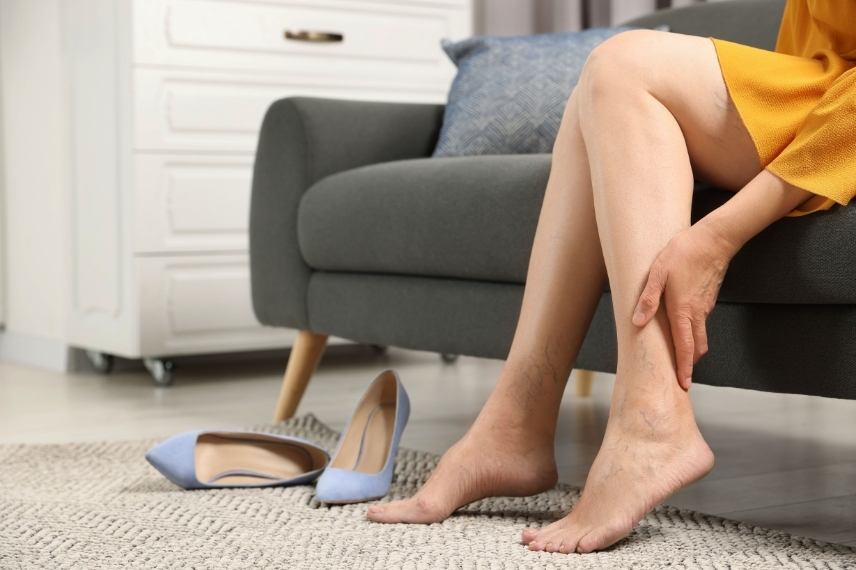
Spider veins—small, dilated red, blue, or purple vessels visible on the surface of the skin—are among the most common vascular concerns worldwide. While often considered a cosmetic issue, they can cause discomfort in some cases and may signal underlying venous stress.
Though laser and other light-based treatments are sometimes used, sclerotherapy and foam sclerotherapy continue to be recognized as the most effective and versatile options, especially when performed by experienced practitioners using optimized techniques.
What Are Spider Veins?
Spider veins, or telangiectasias, are clusters of small blood vessels near the skin surface. They often appear as branching networks on the legs, ankles, or face. While not dangerous, their presence may cause distress or embarrassment, and in some cases, burning, itching, or aching.
Why Do Spider Veins Develop?
Several overlapping factors contribute to their formation:
- Genetics: A strong hereditary link; often run in families
- Hormonal fluctuations: Pregnancy, menopause, birth control pills
- Prolonged standing or sitting: Common in certain occupations
- Obesity: Increases pressure on venous valves
- Sun exposure: Especially on facial telangiectasias
- Trauma or previous vein treatment
- Chronic venous insufficiency: May contribute to distal capillary dilation
When Should Spider Veins Be Treated?
Treatment is typically sought for cosmetic reasons or when symptoms such as discomfort or localized burning arise. However, in some cases, the presence of extensive spider veins can be an indicator of deeper reflux or venous hypertension, especially if accompanied by:
- Leg fatigue
- Visible reticular veins or varicose clusters
- Ankle swelling or pigmentation
In such cases, a Doppler ultrasound evaluation may be warranted before initiating treatment.
Preventive Measures
While spider veins are not always preventable, the following measures can reduce risk:
- Regular physical activity, particularly leg-focused movement
- Weight control to reduce venous pressure
- Avoid prolonged sitting or standing
- Leg elevation when resting
- Use of compression stockings, if indicated
- Sun protection to prevent facial vessels
Sclerotherapy vs. Foam Sclerotherapy: What’s the Difference?
Sclerotherapy
This involves injecting a liquid sclerosing agent directly into the spider vein using a fine needle. The solution irritates the vein lining, causing it to collapse, seal shut, and eventually be absorbed by the body.
- Best suited for very fine, superficial veins
- Precise control in areas with delicate skin, such as the face or ankles
- Minimal discomfort when performed properly
Foam Sclerotherapy
Foam sclerotherapy uses the same sclerosing agent, but mixed with air or gas to create a foam before injection. This foam displaces blood in the vein and allows the active agent to remain in contact with the vein wall longer.
- Ideal for reticular veins, feeder veins, and slightly larger capillaries
- More effective in veins with slow-flowing or stagnant blood
- Allows better visual control during injection
- Fewer sessions may be needed for larger networks
The Role of Technology: VARIXIO® Foam Preparation Device
In our current practice, foam is prepared using the VARIXIO® system, a medical device designed for standardized, high-quality foam production.
- Produces homogenous, stable foam
- Reduces air bubble size, improving distribution and precision
- Enhances safety by minimizing gas embolism risk
- Increases treatment consistency
Compared to traditional manual mixing methods (such as the Tessari technique), VARIXIO allows precise and reproducible foam generation, ensuring optimal results and minimizing variability.
Why Sclerotherapy (Liquid or Foam) Is Superior to Laser
While laser therapy is sometimes used to treat superficial facial telangiectasias, especially when vessels are too small for a needle, it has limitations:
| Aspect | Laser | Sclerotherapy |
| Depth penetration | Shallow | Targets deeper subdermal networks |
| Versatility | Limited to tiny vessels | Can treat spider, reticular, and feeder veins |
| Effectiveness on legs | Low | High |
| Number of sessions | Often more | Usually fewer |
| Pain during procedure | Moderate | Minimal if performed correctly |
Sclerotherapy remains the gold standard, particularly for leg spider veins and visible capillary networks. Even extremely fine vessels can be successfully treated with a well-executed sclerotherapy session—provided the practitioner has adequate experience and anatomical knowledge.
Conclusion
Spider veins may be small in size, but their causes are complex and their management requires precision. While prevention and lifestyle measures help, treatment is often necessary for visible improvement.
When performed by a qualified and experienced practitioner, sclerotherapy and foam sclerotherapy—especially with the support of devices like VARIXIO—remain the most effective, versatile, and durable solutions for both cosmetic and mild symptomatic spider veins.
While lasers may have limited application in specific areas, particularly the face, they are generally less effective than sclerotherapy when it comes to lower extremity veins. In the hands of a skilled professional, sclerotherapy offers unmatched outcomes—even for the finest and most resistant vascular networks.


